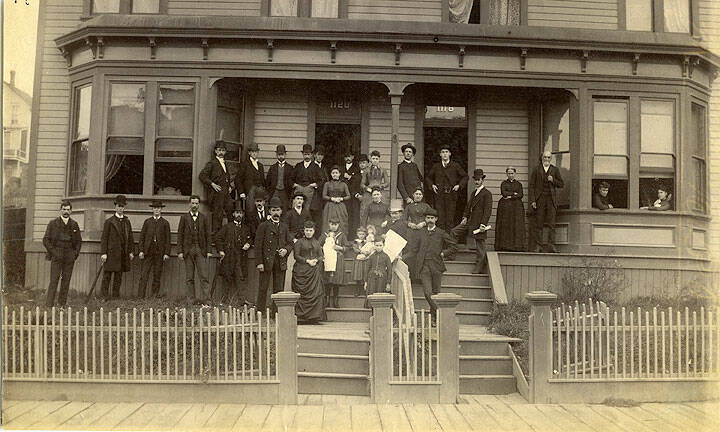By Morf Morford, Tacoma Daily Index
As part of the uber-ization of everything, AirBnb seemed like the ultimate answer – and opportunity.
Short-term rental was the answer for travelers and those on a budget, and, of course, for those with property to rent, a nearly unlimited additional income stream.
According to data from vacation rental research company AirDNA, low interest rates combined with remote work opportunities created an ideal template for setting up an AirBnb, and many did. 66,000 new rental properties were listed just in October of 2022.
The thrill is gone
But like every other aspect of the digital/cyber/uber economy, the short-term rental strategy is losing its appeal.
What seemed like an affordable response to high priced hotels has become, in too many instances, just another set of complicated problems.
When AirBnbs cost about the same as a hotel, which generally offer more amenities and better security (and sometimes packages or perks, like air miles) what’s the difference?
For one thing, some cities don’t like them
In the early days, short-term rentals were relatively unregulated, and there are still plenty of cities that only require hosts to apply for a short-term rental license.
But more and more local governments are tightening short-term rental rules due to criticism that an overabundance of vacation rentals limits the availability of affordable rental housing in a community.
Housing, as you may have noticed, has become a burning issue in almost every neighborhood and municipality.
The last thing any area needs is essential housing being taken off the market.
Cities are responding in different ways. In New York City for example, short-term rentals of less than 30 days are prohibited unless the host is present and the guests are given unobstructed access to the entire unit.
In San Francisco, short-term rentals must be primary residences where the owner lives for at least 275 days out of the year.
In a similar approach, Denver only allows homeowners to apply for a short-term rental license for their primary residence.
Popular tourist areas are not so different – if large cities that depend on revenue from tourism are passing strict requirements for rental property owners, it is likely to happen anywhere.
Many neighbors don’t like them either
Those who live near hotels (or other commercial zones) know what to expect.
An AirBnb in a residential neighborhood violates every premise of a residential area.
Renters coming and going all hours of the night is not what most home buyers agreed to when they bought their homes.
AirBnbs all too often become impromptu party venues.
I spoke to one AirBnb owner whose home had been trashed by a wild party. Even though she lived next door, the many thousands of dollars of damage wrecked her house, kept it off the market for several months and angered her neighbors. One of the renters had a rich dad who paid the bill.
Investor beware
As we all know, property prices and mortgage rates have expanded, dropped and gyrated all over the spectrum.
Gone are the days (and promises) of a near trouble-free, automatic success as an AirBnb owner.
As an investor, especially in desirable areas, you might see an oversupply of properties in your market.
A deep, or even not-so-deep, recession could curb demand for vacation rentals in general.
Or shifting local regulations could prevent you from listing your property as a short-term rental altogether.
Boarding houses
The ultimate irony, of course, is that there is nothing new about affordable, short term rentals.
For most of the 19th Century, and about half of the 20th Century, boarding houses were a mainstay for immigrants, travellers and anyone else on the move – which was almost everyone back then.
Many of these places were cash-only and required little, if any deposit, credit or background check, and were the housing choice for new workers, students and anyone else in motion.
Most of them rented by the day, or week or much longer.
Home owners could rent out a spare room or two, or larger homes were built with an eye toward more occupants. Either way, two important needs were met; housing was available on short notice for those with limited means and a “work from home” industry was found.
Back then there were multiple options for temporary housing. From the local “Y” to spare rooms to dedicated boarding houses and residential hotels, housing geared to those who needed housing on the fly was the core housing solution for many individuals and most cities.
For whatever reason, most cities closed and prohibited boarding houses, leading to the obvious question; where do those people go?
Another irony is that our current system, and excruciating prices of housing (to rent or buy) has led, inevitably some would say, to something we in America have never seen before; widespread dislocation/homelessness across all ages and family configurations.
Affordable housing is not distant and out of reach. We (and virtually every other nation) have had it for centuries.
Zoning and other public policies dictate what is built – and where. The question, as always, is the intent and purpose of construction.
Are we building shelter for those who need it? Or are we building investment vehicles predominantly for profit without regard for those who so visibly still need stable, even if temporary, shelter.
Our decisions and policies are deliberate and their impacts ripple through many decades and leave their mark on our lives and the choices we have (or used to have) regarding housing.





